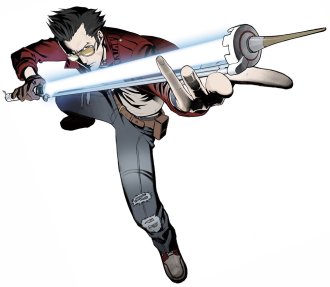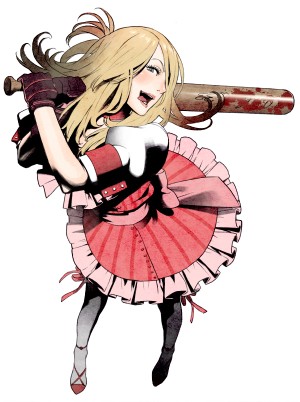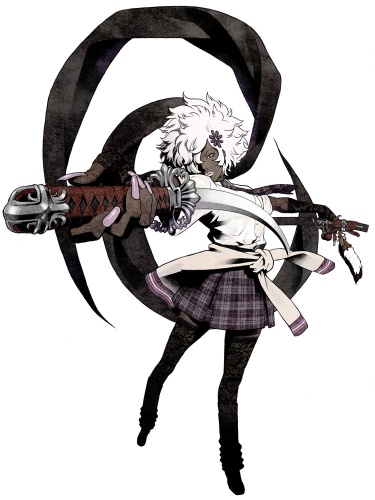The précis for the past week reads somewhat similarly to last week’s effort: nothing but Kameo and Luxor 2.
I’ll start with the latter: I think I’ve managed to burn myself out on Luxor yet again, pushing through to Stage 12-4 on Normal (and up to the Supervisor of Fledglings rank); whilst I’m getting some jollies from my conservative approach to grinding through the levels, the rewards have started to be outweighed by the relentless pressure of the game. It’s stopped being fun and, though I’m a mere eleven stages away from another rare achievement (and the chance to get my gamerscore modulo five again), I might have to step away… again.
Kameo, though, is finally – after having picked it up on the 360’s launch – off The List. Monday night saw me knock off the two remaining solo Thorn’s Pass Achievements, and a greedy late night attempt at my final Score Attack A-Rank ended in failure when I neglected obscure game traits – like Kameo’s health. But Tuesday morning I woke up nursing a dribbly, muddle-headed cold, and subsequently had two days away from the office… I still had sufficient hand-eye co-ordination to play, however, and a repeat attempt at the final Score Attack was a half-billion-point success. Enabling Kameo‘s inbuilt cheat modes (through Score Attack unlockables) yielded a simple Expert-mode walkthrough, and with that… Kameo was done.
But I still want to write a longer piece on Kameo, so I plunged straight back in and started a whole new game, just to check whether my memories of the game were correct. And it was a blast – my A-Rank skills allowed me to blitz my way through the game, and I almost 100%-ed the game inside a dozen hours, and my level scores nearly all exceeded the A-Rank requirements (except that bloody Forgotten Forest level – grumble). So – the information gathered will now likely gestate for a couple of months before popping out into an experience-piece (as opposed to opinion-piece, or review).
There’s one more thing I’d like to write about this week (having just pissed away a large amount of time watching stuff on YouTube), and that is the battle that I’m facing on an almost daily basis about whether or not I go on a big game-buying frenzy. Now, let’s be quite clear, here: I’m well aware of the need for retail therapy, but what I’m currently feeling isn’t an instance of that; rather, I’m currently being jostled by the desire to Support the Ones I Love conflicting with the need to reduce The List.
One of my many Other Lists is a collection of names that I feel have earned my immediate support – creators that will get my money almost immediately upon release, no questions asked. But that List has been causing me a lot of double-takes lately; whilst Llamasoft seem to have targeted the non-List-impacting iOS, Double Fine have seen fit to release Trenched which, by all accounts (and I admit to not having even tried the demo), is a tower defence game that requires friends for Good Times (a problem for me, since its release in Europe – where most of my XBL friends are – has been caught up in a legal quagmire). And I’m not a fan of tower defence stuff… at all. Platinum Games have delighted with Bayonetta, and then disgusted with a not-returned-to-in-ages MadWorld; the demo for Vanquish didn’t impress me (on either the 360 or the PS3). And after the stunning Killer7 and No More Heroes, I was shattered by the crapulence of Suda 51’s No More Heroes: Desperate Struggle, and am thus wary of grabbing Shadows of the Damned (especially when Suda 51’s next game is slated to be the zombie-filled Lollipop Chainsaw – because I hate the use of zombies in games). If Shadows is shit, that may put Suda 51 in the three-strikes territory for me (as it has for other people).
In short: I want to buy Vanquish to support Platinum. I want to buy Trenched to support Double Fine. I want to buy Shadows of the Damned to support Suda 51 and Grasshopper Manufacture. But I’m scared by the resultant pressure on The List; whilst Shadows looks easy enough, Vanquish most certainly does not, and I’m already struggling with Luxor, another game-style I don’t get on well with, and I doubt Trenched will offer the same opportunities to brute-force progress.
My arm gets twisted when I hear that sales for recent games have been “disappointing”; whilst I have no real idea how accurate the numbers at VGChartz are, Child of Eden is pegged at less than six-figure-sales, and Shadows of the Damned has struggled to sixty thousand sales (split evenly between the 360 and PS3).
And that, frankly, is bullshit.
I went straight out and bought a brand-spankin’-new copy of Shadows. I’ve not played it yet, but at least I’ve put a penny in Grasshopper’s pocket. Vanquish will have to wait – part of the lust behind that was driven by the discovery of a local store selling lenticular copies (on both platforms) for a mere AU$30. But then that’s almost too cheap; I’d actually rather pay AU$50 to buy it on XBLM (or, I assume, PSN) because I believe in digital delivery, and because I figure Platinum would actually get more out of that.
…oh god, what have I done?


